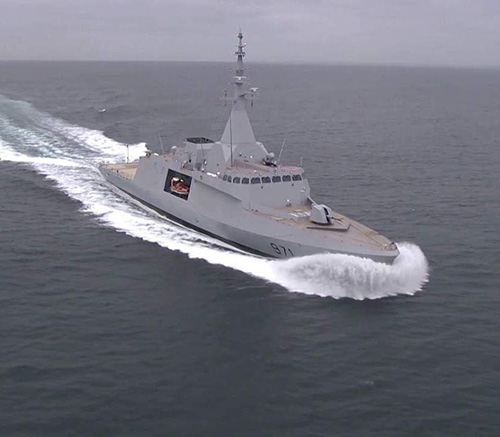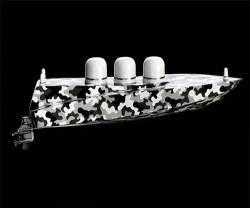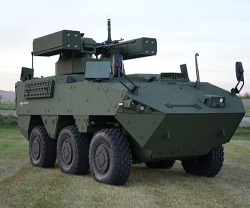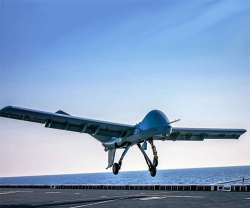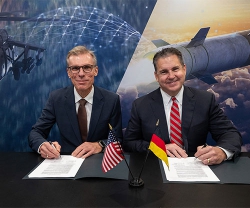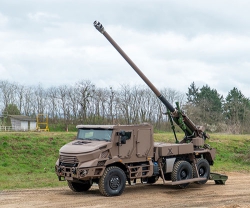The list below, based on data compiled in Global Firepower’s 2018 Military Strength Ranking, ranks countries solely by the number of naval assets they have, including support craft, patrol boats, corvettes, destroyers, frigates, and aircraft carriers - the latter of which refers to both traditional carriers and “helicopter carrier” warships.
1. North Korea - 967 Ships
The Korean People’s navy is the largest in size, but North Korea’s international isolation and focus on nuclear and ballistic-missile development have left its conventional forces - the navy in particular - short of resources.
Among its 967 naval assets are 10 frigates, 2 corvettes, 86 submarines, 438 patrol craft, and 25 mine-warfare vessels. Those ships are largely of Soviet, Chinese, or North Korean origin and, in most cases, are low quality and poorly maintained.
North Korea has also invested heavily in its sub fleet, which is one of the world’s largest. The Pentagon estimated in 2015 that Pyongyang had 70 subs. While many of those are thought to be obsolete, North Korea does have a single Gorae-class ballistic-missile submarine.
2. China - 714 Ships
China’s navy has also grown rapidly in recent years, and has undertaken more operations in its near abroad - particularly in the South China Sea, over which Beijing has made expansive and contested claims - and places further afield, like the Indian Ocean.
Of its 714 naval assets, there is one aircraft carrier (and another poised to start sea trials), 50 frigates, 29 destroyers, 39 corvettes, 73 submarines, 220 patrol craft, and 29 mine-warfare vessels.
China’s subs are of particular concern to its neighbors and the US. China’s subs have had close encounters with US warships on several occasions over the past two decades, and its rapid acquisition of advanced diesel-electric subs allows Beijing to project power in the Pacific and Indian oceans.
3. United States - 415 Ships
Despite being third in terms of numbers, the US Navy is generally considered the most powerful, and it operates around the world.
Of the 415 naval assets it has, the US has 20 aircraft carriers - the most in the world by a wide margin - 10 frigates, 65 destroyers, 66 submarines, 13 patrol craft, and 11 mine-warfare vessels.
In recent years, the Navy has added a number of ships, including its newest aircraft carrier, the first-in-class USS Gerald R. Ford. The second-in-class USS John F. Kennedy is more than 70% complete. The Navy is also looking into buying the third and fourth Ford-class carriers in a single purchase.
It has also developed a new multi-mission stealth ship, the Zumwalt-class destroyer, as well as two classes of littoral-combat ships. The latest Virginia-class attack submarine, the USS Colorado, was commissioned in March, and the Navy is now looking to continue building Virginia-class subs as production of Columbia-class ballistic-missile subs gets started in the early 2020s.
4. Iran - 398 Ships
Years of sanctions and embargoes have limited Iran’s ability to bulk up its navy, and most of its 398 naval assets are patrol craft, of which Tehran has 230. It also has 5 frigates, 3 corvettes, 33 submarines, and 10 mine-warfare vessels.
Iran said in late 2017 that it was looking to add a destroyer by 2018 and that it was developing nuclear-powered ships and subs, which Iranian officials said, would be done in line with the 2015 nuclear deal.
Iran’s coastline stretches along the Persian Gulf, the Gulf of Oman, and the Strait of Hormuz, a maritime choke point through which much of the world's oil passes. Its proximity to these sea lanes has given Iran outsize influence over maritime activity in the area.
5. Russia - 352 Ships
Under the leadership of Vladimir Putin, Russia has reinvigorated its navy, seeking to recover the stature and capabilities lost in the years after the fall of the Soviet Union.
The force currently counts 352 naval assets, including one aircraft carrier, 9 frigates, 13 destroyers, 78 corvettes, 62 submarines, 41 patrol craft, and 47 mine-warfare vessels.
The Russian navy is now also focusing on deploying long-range precision-guided weapons to provide a form of nonnuclear strategic deterrence - though those conventional weapons are meant to compliment Russia’s nuclear forces rather than replace them.
Russia has invested particular attention to its undersea force over the past decade and a half. NATO navies have tracked new Russian subs closely, and in recent years Western countries have expressed concern about the potential for Russian interference with undersea cables that undergird global telecommunications and financial networks.
6. Egypt - 319 Ships
Egypt’s navy is the largest in the Middle East and North Africa, and its tasks include protection of the country’s Mediterranean Sea and Red Sea coastlines as well as defense of the approaches to the Suez Canal.
Egypt’s naval force includes two aircraft carriers, nine frigates, four corvettes, six submarines, 53 patrol craft, and 23 mine-warfare vessels.
The country’s navy has developed into a two-sea force in recent years, with its orientation growing to include a wider role in the Red Sea. Submarine and anti-submarine operations have gotten greater emphasis, as have anti-piracy and counterterrorism operations.
7. India - 295 Ships
Like countries in Europe, India has grown increasingly concerned about the naval activity of one of its bigger neighbors: China.
While New Delhi and Beijing have long had contentious relations on their land border, in recent years India has watched warily as China has increased its presence in the Indian Ocean region, sending attack submarines through the ocean and establishing development deals with countries along its shore.
India currently has 295 naval assets, including an aircraft carrier, 14 frigates, 11 destroyers, 22 corvettes, 16 submarines, 139 patrol aircraft, and 4 mine-warfare vessels.
8. Finland - 270 Ships
Finland borders the Baltic Sea, between Russia and Sweden. It has 270 naval assets, including 8 patrol craft and 18 mine-warfare vessels, in addition to landing craft, transport ships, and other vessels like tugs and cable layers.
Like other countries in Northern and Eastern Europe, Finland has grown increasingly wary of Russian military activity. Finland is not a NATO member, but has taken part in recent NATO exercises, including a crisis-management exercise in October 2017.
Finland is looking to increase domestic defense spending. The US State Department recently cleared a $730 million sale of naval weapons to Helsinki, including ship- and surfaced-launched missiles.
9. Colombia - 234 Ships
Colombia is the only country in South America that has both Atlantic and Pacific coasts, and its naval assets include 4 frigates, 1 corvette, 11 submarines, and 55 patrol craft.
The country is the world’s biggest producer of cocaine, and its armed forces have been heavily involved in drug-interdiction efforts, particularly along the Pacific coast, where the state presence is limited and smuggling activity is rampant.
Colombia also has a sprawling network of rivers, which are the only way to reach some areas of the country.
10. Indonesia - 221 Ships
The Indonesian archipelago is strategically located between the Pacific and Indian oceans and has 34,000 miles of coastline. It is the world’s largest country composed only of islands, of which there are nearly 13,500 - 922 of them permanently inhabited.
Its 221 naval assets include 8 frigates, 24 corvettes, 3 submarines, 74 patrol craft, and 12 mine-warfare vessels.
Indonesia is one of a number of countries that have pushed back on China’s expansive sea claims in the region and is looking to counter Beijing's increasing naval activity. As of early 2017, it was in talks with several foreign shipbuilders about adding more submarines and is looking to add 8 by 2024. In August 2017, it commissioned its first new attack submarine in 34 years.

